Kanazawa Station: Shinkansen Tickets, Map, Food & Access from Tokyo Station
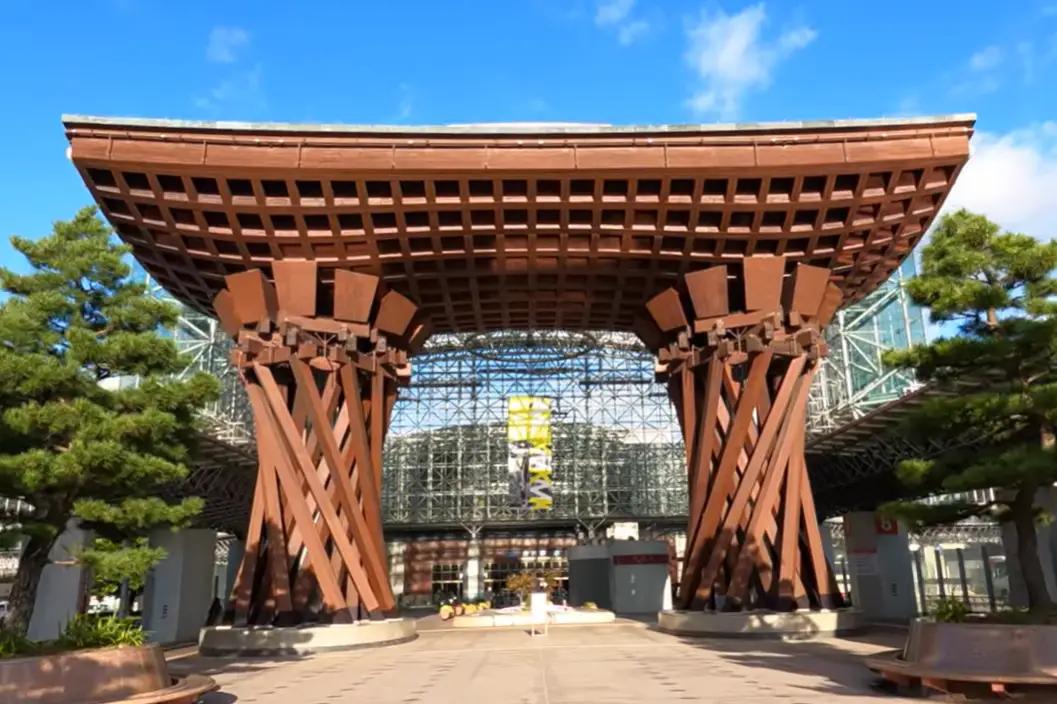
Kanazawa Station serves as both the city's main gateway and its architectural landmark. The dramatic entrance design blends traditional Japanese craftsmanship with contemporary glass and timber structures, setting the tone for your visit to this historic region. The Hokuriku Shinkansen connects Tokyo to Kanazawa in just over two hours.
Whether you're heading to famous gardens, traditional districts, or using Kanazawa as your base for regional exploration, knowing how the station works saves time and reduces stress. This guide covers ticket options, station layout, facilities, and local transport. It provides practical information to help you move through Kanazawa Station efficiently.
Kanazawa Station Overview
Key Facts and Location
Kanazawa Station opened in April 1898 and serves as Ishikawa Prefecture's main railway terminal. The station underwent major renovation in 2005, introducing its famous landmarks. Since March 16, 2024, the Hokuriku Shinkansen has been extended from Kanazawa to Tsuruga in Fukui Prefecture, making Kanazawa a significant stop on the Tokyo-Tsuruga route.
The station is located in central Kanazawa, making it easy to reach major attractions. The wooden Tsuzumi-mon Gate and Motenashi Dome symbolize local craftsmanship and hospitality.
Lines and Services Available

Kanazawa Station serves multiple railway lines for regional and long-distance travel:
- Hokuriku Shinkansen: High-speed service connecting Tokyo, Nagano, Toyama, Kanazawa, and Tsuruga
- JR Hokuriku Main Line: Conventional trains to nearby cities in the region
- JR Nanao Line: Local service to the Noto Peninsula
- IR Ishikawa Railway: Regional line connecting to Fukui and other local stations
The station also connects to local bus networks. This makes transfers between train and bus simple and efficient.
Shinkansen Access to Kanazawa
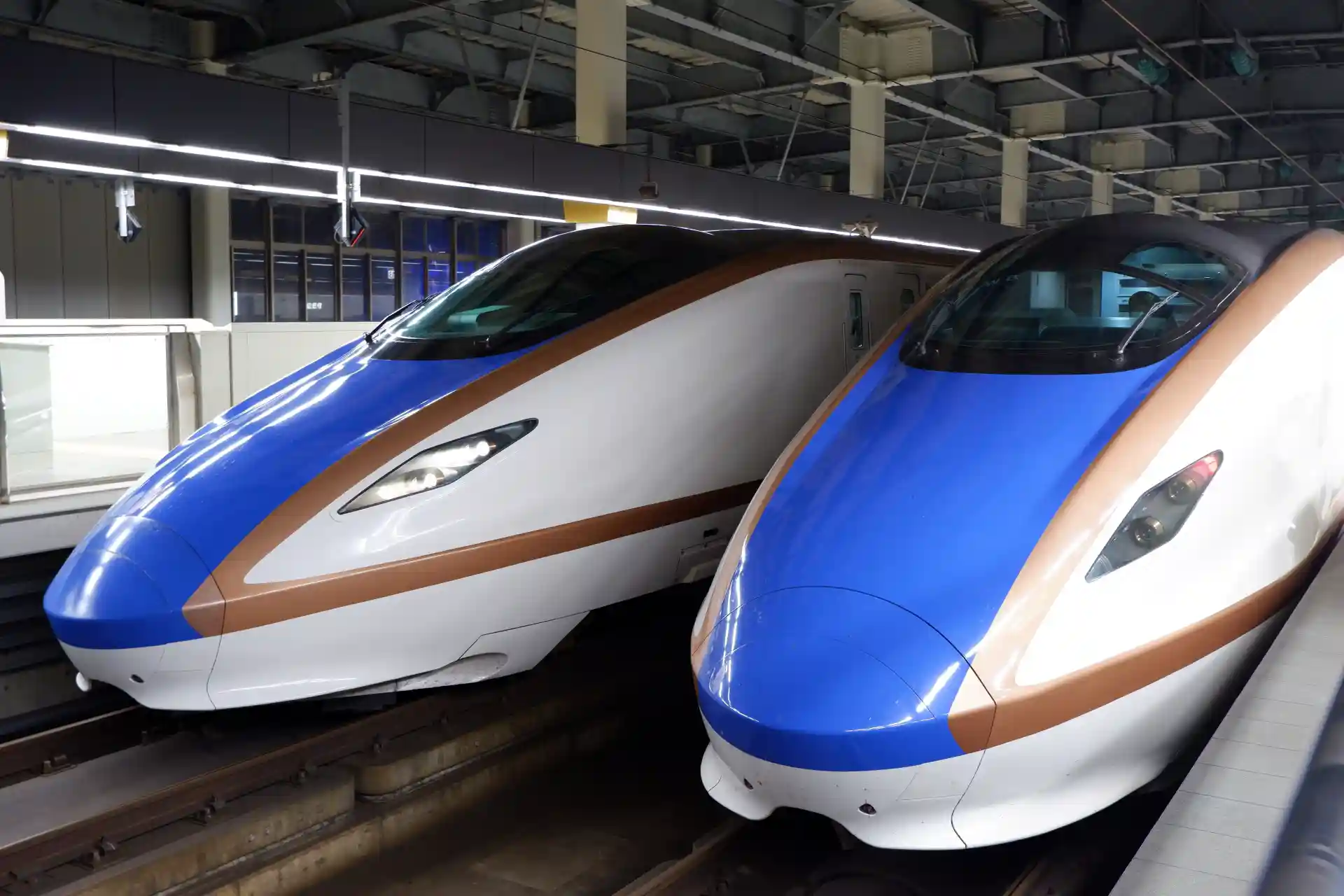
Hokuriku Shinkansen Route and Travel Times
The Hokuriku Shinkansen offers three main services to Kanazawa. Each service has different speeds and stops:
- Kagayaki: The fastest service, stopping only at major stations; all seats are reserved.
- Hakutaka: Semi-express service with more stops, includes both reserved and non-reserved seating.
- Tsurugi: Shuttle service between Toyama and Kanazawa (some extend to Tsuruga).
Kagayaki trains offer the quickest journey. All services provide reserved and non-reserved seating options.
Tokyo to Kanazawa Timetable and Fares
Travel times from Tokyo to Kanazawa range from about 2 hours 25 minutes on the fastest services to around 3 hours on slower ones. Trains run frequently throughout the day. Kagayaki services depart approximately every hour during peak times, while Hakutaka trains offer additional departure options.
Fares between Tokyo and Kanazawa typically range from around ¥13,000 to ¥30,000, depending on train type, seat class, and booking date. Reserved seats cost more than non-reserved seats. Green Car and GranClass options are also available at higher prices. Prices vary by train, date, and availability. Check current schedules and fares before booking your trip.
Shinkansen Tickets at Kanazawa Station
Ticket Office and Machines

Kanazawa Station has multiple ticket options for Shinkansen travelers. Ticket offices are located near the Shinkansen gates on the first floor. Staff can assist with reservations and fare information in Japanese and limited English.
Automated ticket machines accept cash and credit cards. Machines display options in English, Chinese, and Korean for international travelers. You can purchase tickets for same-day or advance travel at these machines.
Online Booking via Japan Bullet Train
Booking Shinkansen tickets online saves time and helps you avoid station lines. Japan Bullet Train offers a convenient online reservation system for international travelers.
After booking, you receive a QR code by email. Simply exchange your QR code for a paper ticket at designated machines or counters at the station. This service covers most Shinkansen routes, including the Hokuriku line to Kanazawa. Booking ahead ensures seat availability, especially during busy travel seasons.

Using JR Pass and Hokuriku Arch Pass
The JR Pass covers Hokuriku Shinkansen services between Tokyo and Kanazawa. Passholders can use both Kagayaki and Hakutaka trains without additional fees.
The Hokuriku Arch Pass is a regional pass covering reserved seats between Tokyo and Kanazawa (and beyond) for foreign visitors, though there are usage conditions. Check pass eligibility before your trip.
Station Layout, Exits and Map at Kanazawa Station
East (Kenrokuen) Exit

The East Exit faces Kenrokuen Garden and the city's main attractions.
The famous Tsuzumi-mon Gate stands at this entrance, inspired by traditional Japanese hand drums. The Motenashi Dome covers the plaza like a glass umbrella, symbolizing hospitality. This design reflects Kanazawa's frequent rain and snow. Tourist information centers and bus stops are located near this exit.
Most travelers heading to Kenrokuen, Higashi Chaya District, or downtown use this exit.
West (Kanazawa Port) Exit
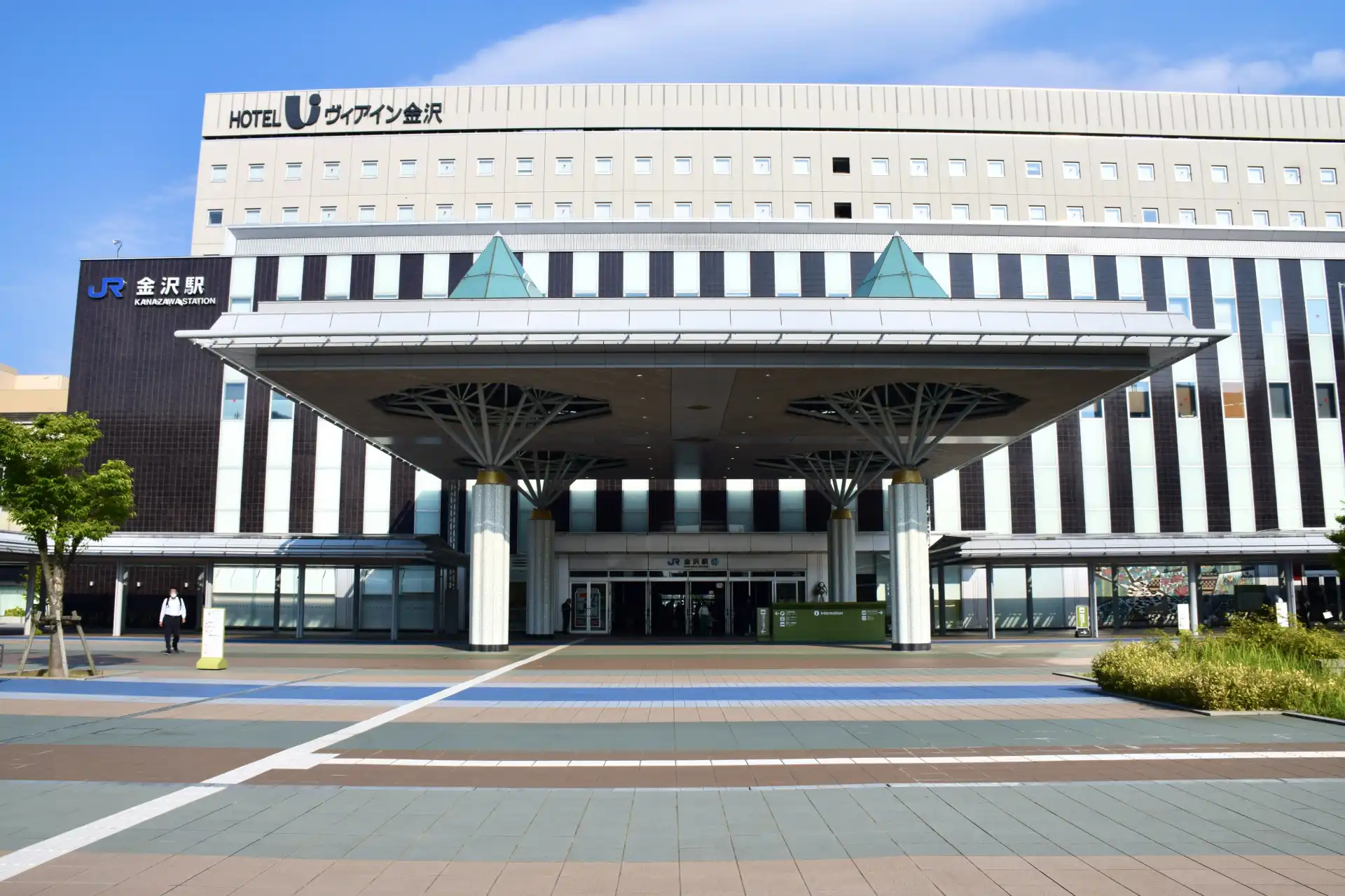
The West Exit leads toward the port area and business district. Many hotels are located within walking distance of this exit. Taxi stands and car rental services are also available here. This exit is quieter than the East side and useful for travelers with heavy luggage. Parking facilities are accessible from this side for visitors arriving by car.
Shinkansen Platform Layout
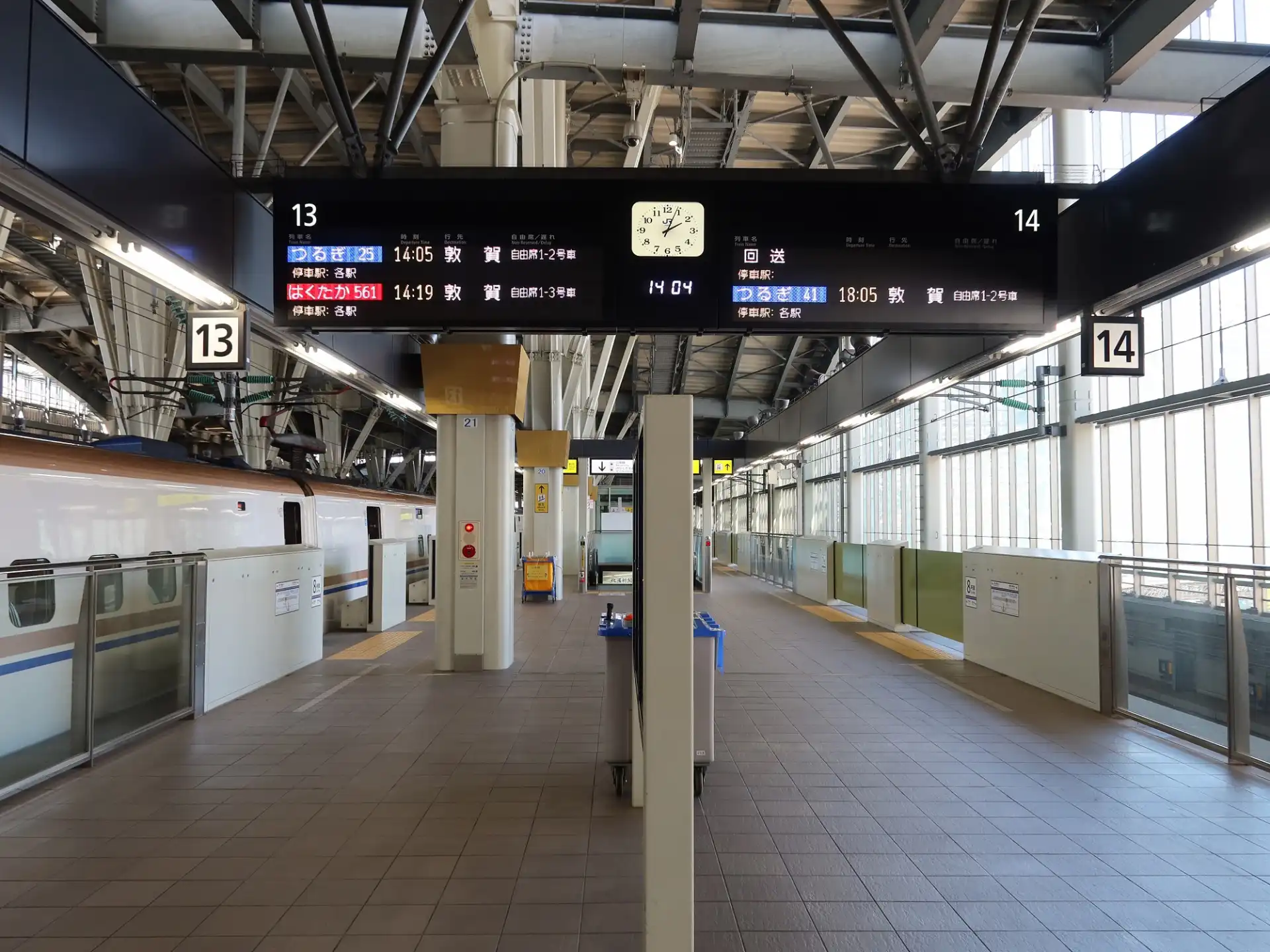
The Shinkansen ticket gates are located on the first floor in the Kenrokuen Exit (East Exit) area. Shinkansen platforms are on the elevated second floor. If you need to transfer between conventional JR lines and the Shinkansen, transfer gates are located on the mezzanine level between floors.
Platforms 11 to 14 serve all Hokuriku Shinkansen trains. These platforms handle trains heading toward Fukui and Tsuruga, as well as trains toward Toyama and Tokyo. Elevators and escalators connect all levels. Allow extra time if you need assistance or have large luggage.
Facilities at Kanazawa Station
Coin Lockers and Baggage Services
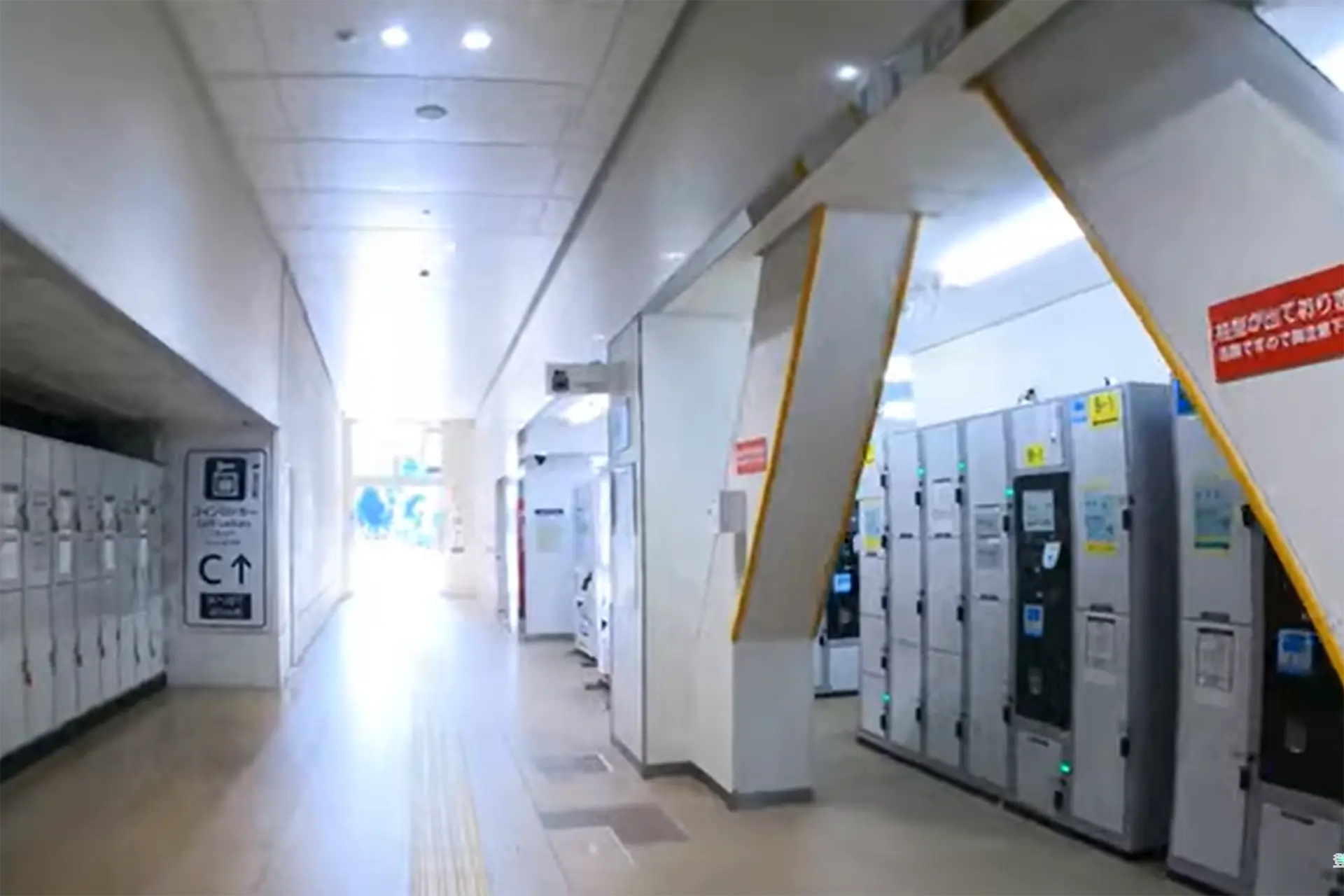
Kanazawa Station provides several coin lockers throughout the station, making it easy to store your luggage while you explore the city. Lockers are available near both exits and inside connected shopping areas. Here’s where you can find them:
- Near the East Exit (Kenrokuen side): Several lockers are located inside the “Anto” shopping area near the East Exit. You’ll find them next to the Luggage Storage Counter and Yamato Transport (Takkyubin) service.
- Near the West Exit (Port side): Lockers are available just outside the West Exit, near the taxi stands and bus stops.
- South Passage (between East and West sides): A set of lockers is installed along the corridor connecting both exits, close to the bicycle parking area.
- Inside Rinto (next to JR Ticket Office): Located inside Rinto, a shopping area connected to the central concourse. The lockers are next to the Nippon Travel Agency counter.
Restaurants
Local Food Specialties
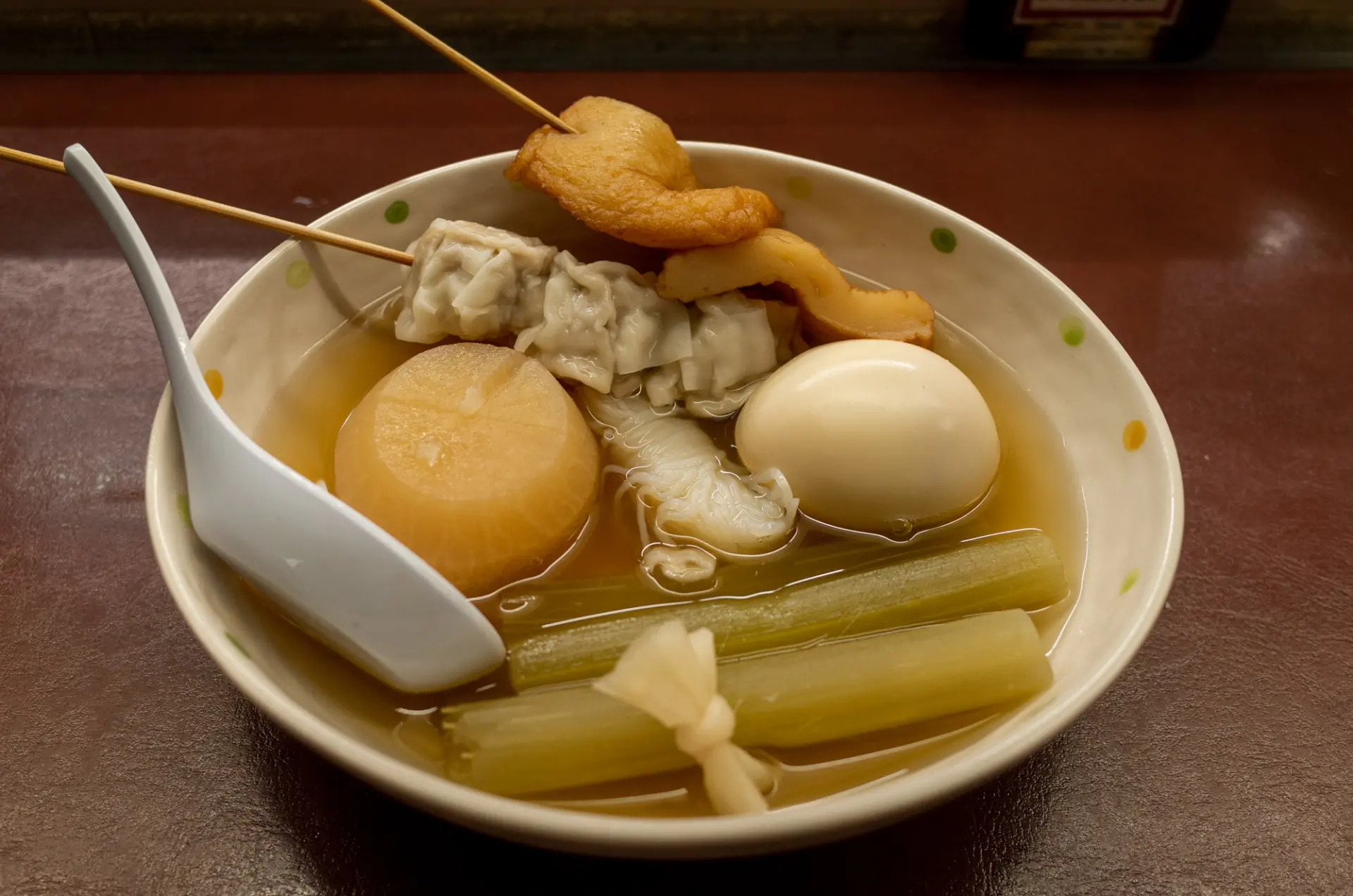
Kanazawa Station features restaurants showcasing local Ishikawa cuisine. Dishes include fresh seafood from the Sea of Japan, Kaga vegetables, and regional noodles. The station complex includes Kanazawa Hyakubangai Anto, a shopping and dining area offering various local food options.
Visitors can enjoy traditional Japanese restaurants, sushi bars, and sake specialty shops within or near the station.
Ekiben (boxed meals sold at train stations)

The station is also famous for its ekiben. Kanazawa's ekiben highlight premium local ingredients. Popular options include fatty nodoguro (blackthroat seaperch), luxurious crab-filled bento boxes, and special meat bentos featuring Noto beef or Noto pork.
These meals are perfect for enjoying on the Shinkansen or during your journey. Ekiben shops are located near the Shinkansen gates and main concourse.
Shopping and Souvenirs
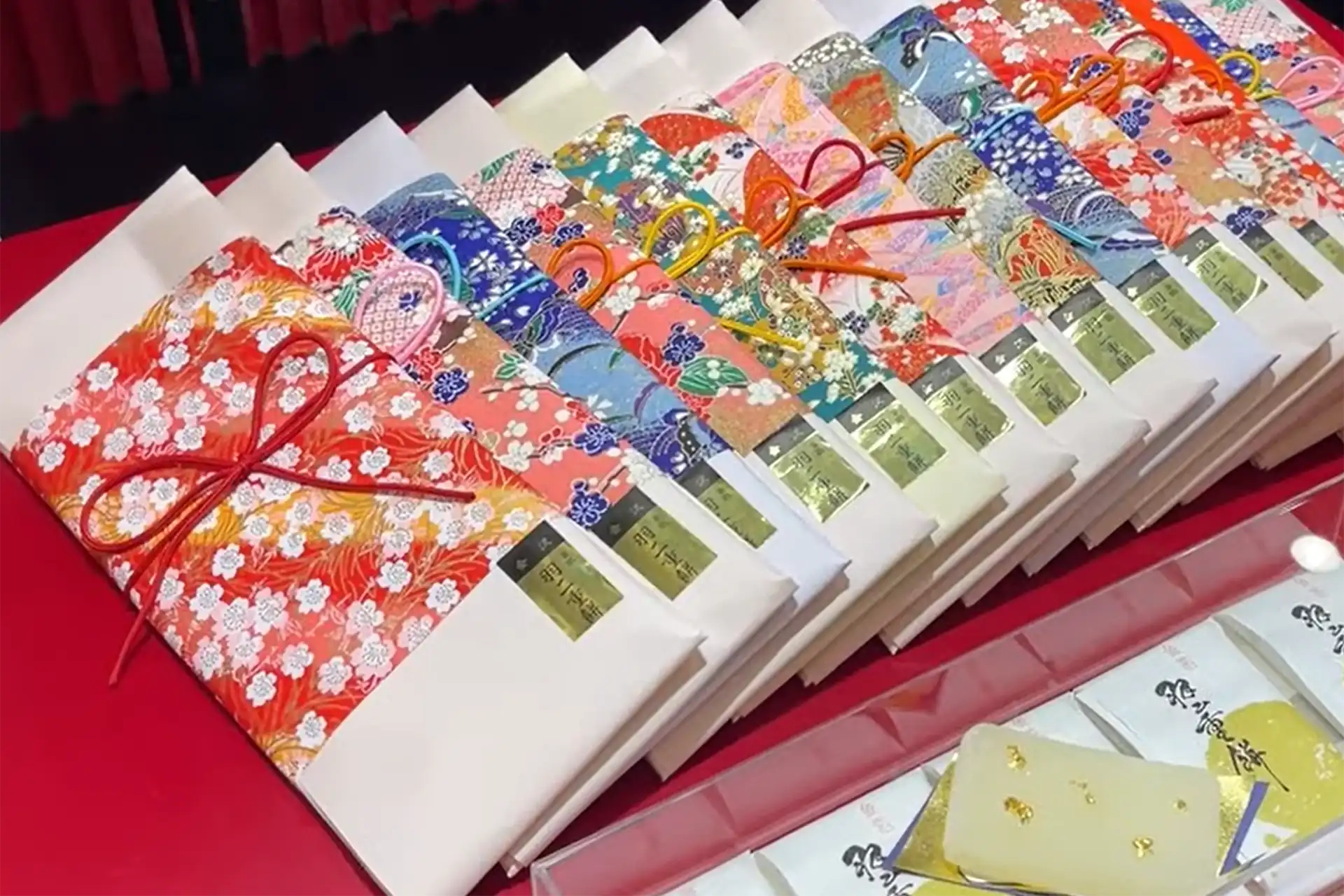
The station houses numerous shops selling local crafts, sweets, and souvenirs. The main shopping areas are Kanazawa Hyakubangai Anto and Rinto, both connected to the station and offering a wide selection of Kanazawa products.
Popular souvenirs include:
- Gold leaf products: Cosmetics, traditional Japanese accessories, and stationery featuring Kanazawa's famous gold craftsmanship
- Kaga-bocha: Fragrant roasted hojicha tea, a local specialty known for its toasted flavor
- Local sake: Brewed by Ishikawa breweries using regional rice and pure water
- Traditional sweets: Seasonal Japanese confections and regional snacks reflecting Kaga culture
Tourist Information Center and Wi-Fi Availability
Tourist information centers near the East Exit provide maps, brochures, and travel advice in multiple languages. Staff can help with directions, attraction details, and transportation options.
Free Wi-Fi is available throughout the station, including waiting areas and concourses. Connect to public Wi-Fi by selecting the network and following registration instructions. For reliable mobile internet during your trip, consider Japan Wireless pocket Wi-Fi or Japan Wireless eSIM services.
Nearby Attractions and Local Transport
Kenrokuen Garden
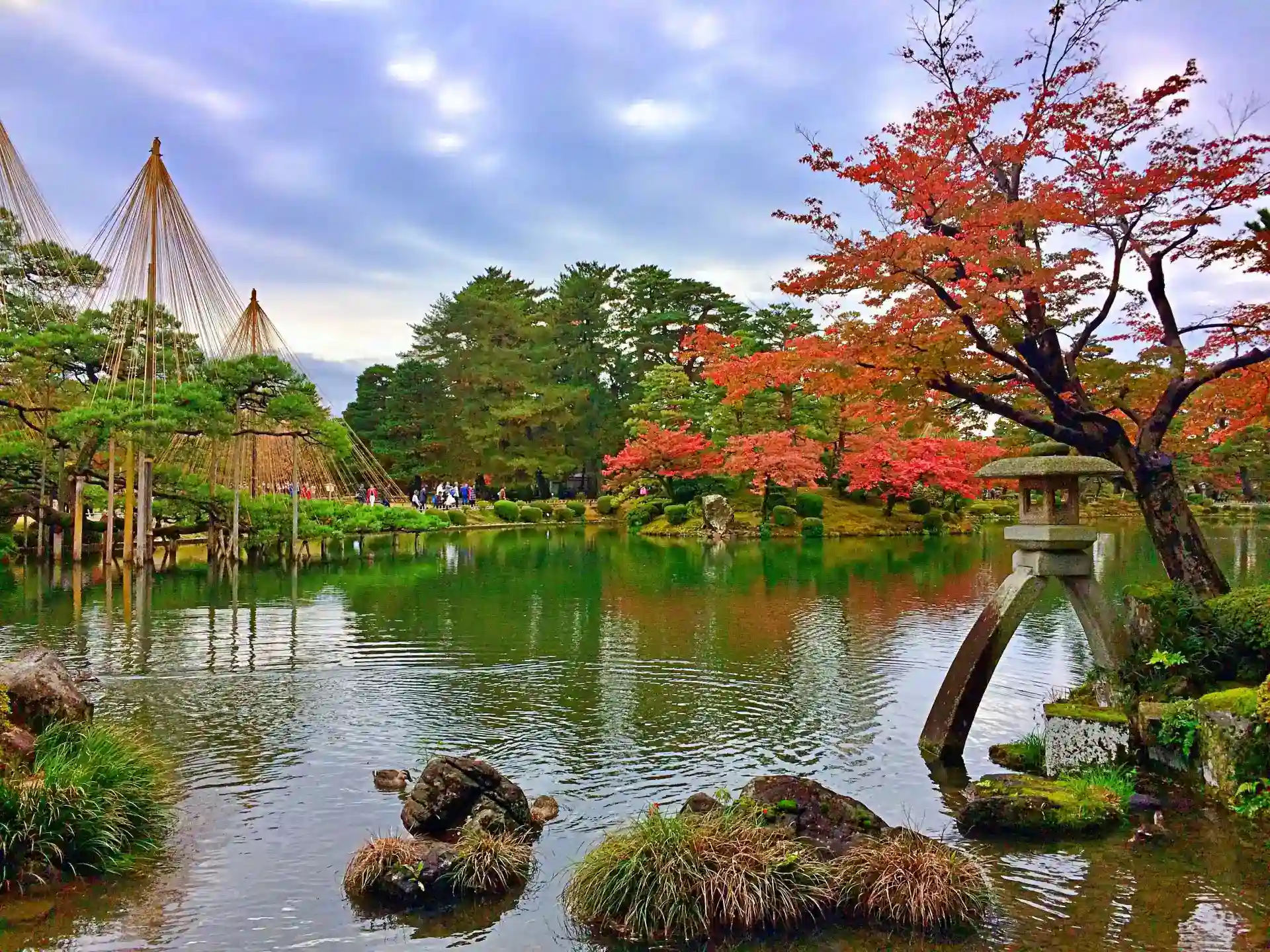
Kenrokuen Garden is one of Japan's three most famous gardens. It is located about 3 kilometers from Kanazawa Station. Buses from the East Exit reach the garden in approximately 15-20 minutes.
The garden features seasonal landscapes, ponds, teahouses, and historic trees. Visiting during spring or autumn offers beautiful cherry blossoms or fall colors.
Higashi Chaya District

Higashi Chaya District preserves traditional wooden teahouses from the Edo period. This historic area is about 3 kilometers east of the station. Buses or a short taxi ride connect the station to the district.
Visitors can explore narrow streets, enter teahouses, and purchase local crafts. The district is especially atmospheric in the evening.
Omicho Market
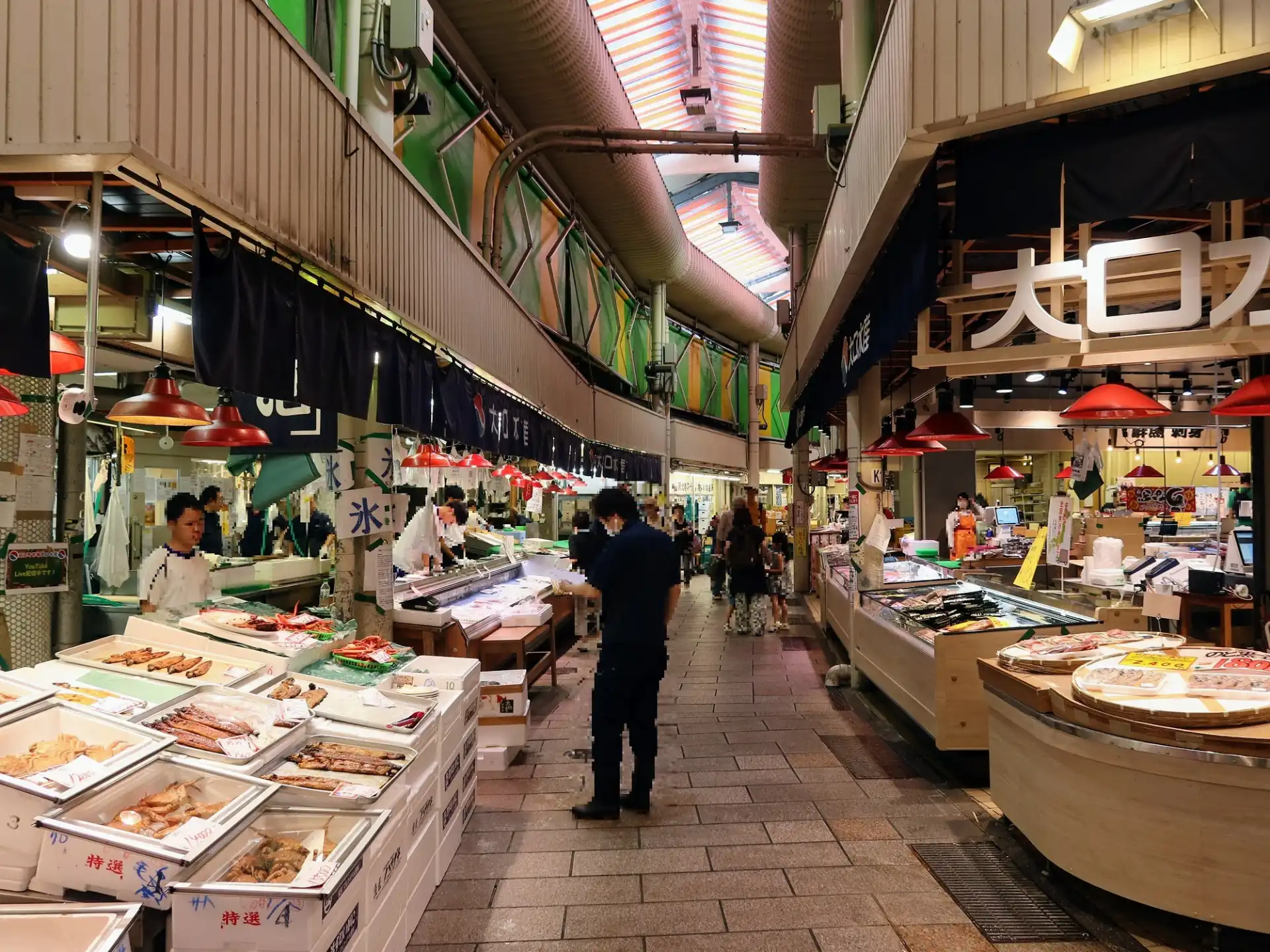
Omicho Market has served Kanazawa residents for over 280 years. The market is a 15-minute walk or short bus ride from the station.
Vendors sell fresh seafood, produce, and prepared foods. Visitors can enjoy sushi, sashimi, and other local dishes at market stalls. The market is an excellent introduction to Kanazawa's food culture.
Kanazawa Loop Bus

Kanazawa's bus network connects the station to all major attractions. The Kanazawa Loop Bus circles key sights like Kenrokuen and Higashi Chaya District, departing from the East Exit. Fares can be paid by cash or IC card. IC cards like Suica, PASMO, and ICOCA work on local buses and trains, making travel convenient. Route maps are available at tourist information centers.
FAQ
Why is Kanazawa Called Little Kyoto?
Kanazawa earned this nickname due to its preserved Edo-period architecture and traditional culture. The city escaped major bombing during World War II. Like Kyoto, it features beautiful gardens, teahouse districts, and craft traditions, but with fewer crowds.
What Is the Main Train Station in Kanazawa?
Kanazawa Station is the city's only major train station. It serves as the central hub for Shinkansen, JR lines, and regional railways.
Can I Use Suica or PASMO in Kanazawa?
Yes, Suica and PASMO work on local trains, buses, and for small purchases. Note that IC cards cannot be used for Shinkansen boarding; reserved tickets are required.
Plan Your Visit
Kanazawa Station is your gateway to exploring Northern Japan's rich cultural heritage. This beautifully designed station connects you to Kanazawa's famous gardens, traditional districts, and historic sites. Beyond the city, Kanazawa Station serves as a key hub on the Hokuriku Shinkansen line, making it the perfect base for exploring the wider Hokuriku region.
The Hokuriku Shinkansen brings you from Tokyo in just over two hours, opening doors to authentic Japanese experiences away from crowded tourist routes. Whether you're visiting for a day or using Kanazawa as your starting point for regional travel, the station's modern facilities and clear signage make your journey smooth and stress-free.
Ready to discover Kanazawa and the Hokuriku region? Book your Hokuriku Shinkansen tickets with Japan Bullet Train for a hassle-free reservation experience. Reserve online, receive your QR code, and start your adventure to Northern Japan's hidden gem.

